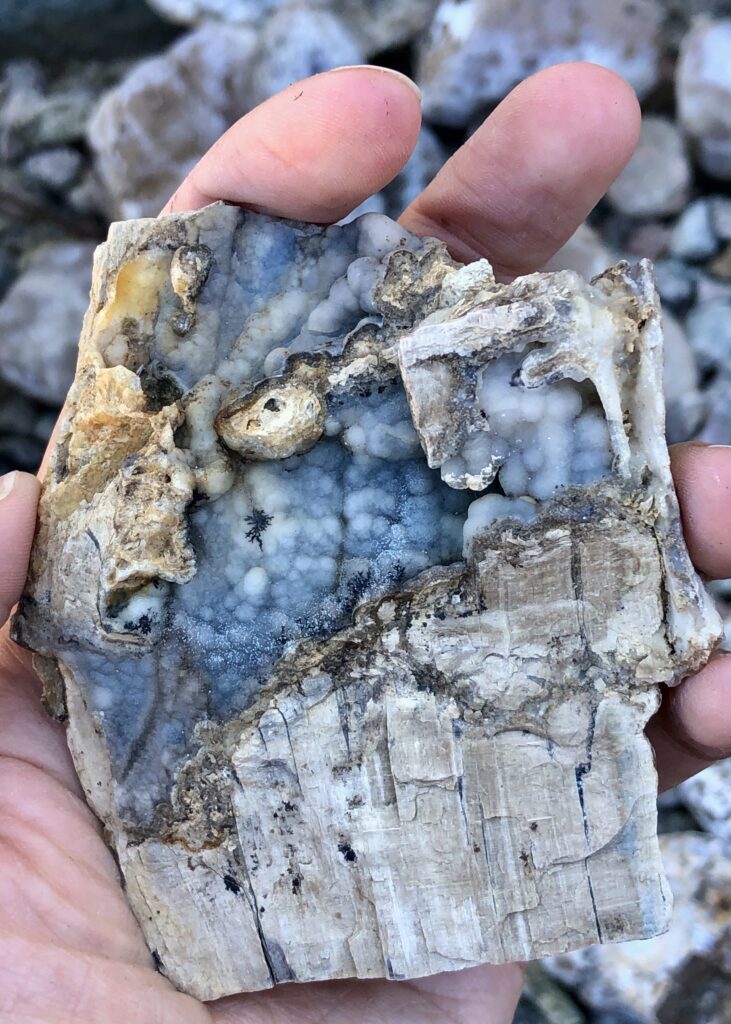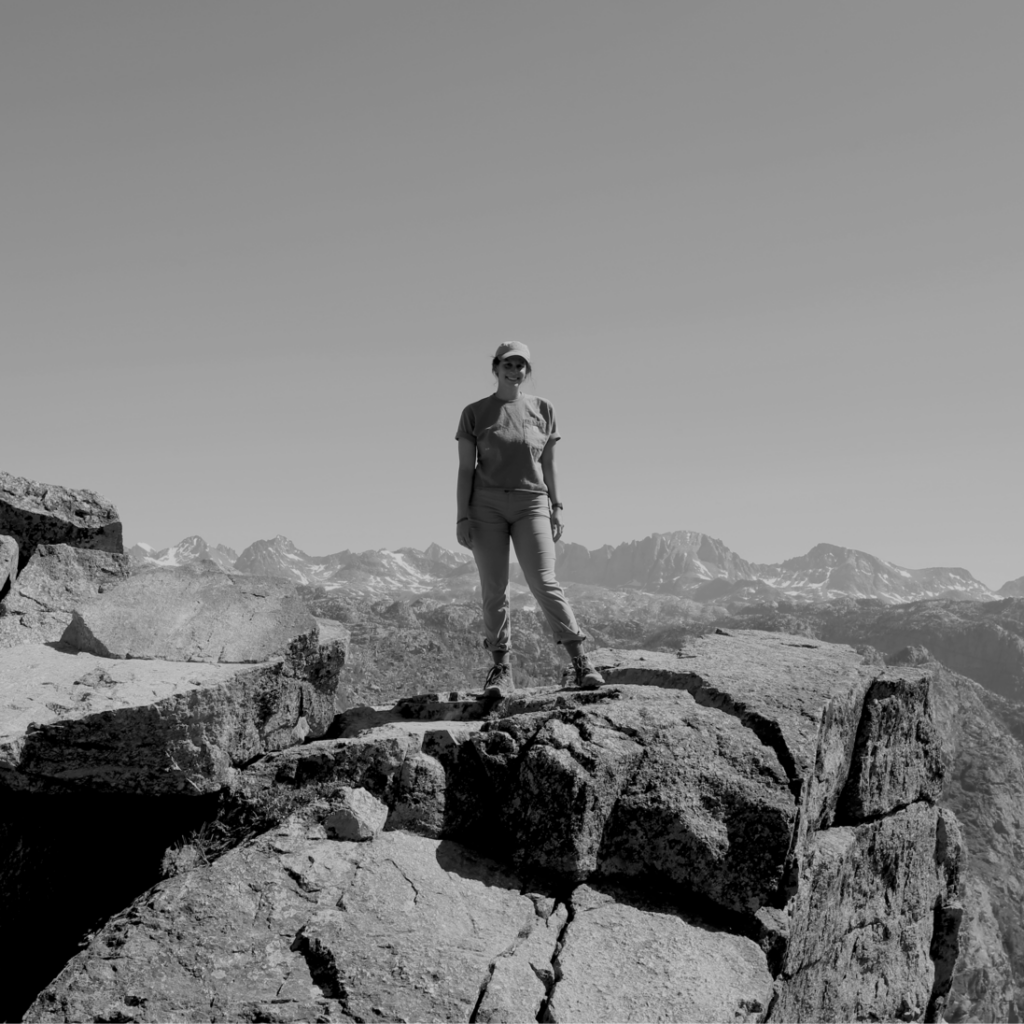Some days our soil auger hits a layer of shale and instead of retrieving messy handfuls of sandy soil, we hear the dreaded grinding of steel on rock. We accept the disappointment of a missing data point because the alternative is to litter the ground with small holes to find a penetrable spot.
Around 50 million years ago, when The Upper Green River Basin was an Eocene lake, it was home to fish, crocodiles, and now long-extinct mammals. Named Lake Gosiute, its water drained and filled periodically for 5 million years. The lake churned over geologic time, swallowing up nearby forests and leaving wood decaying in the sediment.
For a period of a few million years, volcanic eruptions in the Yellowstone region then deposited volcanic debris over Lake Gosiute, preserving the sunken trees as both petrified wood and limb-casts. Individual plant cells mineralized to form petrified wood, freezing shape and texture in time. Limb-casts only barely resemble wood. When ash rained, the submerged organic matter burned and left behind hollow pockets. Silica-rich water oozed into these pockets—the way a sculptor might fill a mold with plaster—and formed microscopic crystals.
After I’ve walked the auger back to my vehicle, I have a little time to roam. The shale scattered around the sagebrush hints that between layers of ancient sediment I might find evidence of life bubbling to the surface. I wander near the top of a hill, just where the shale begins to cleave and sharp corners jut from the slope. Here I pace back and forth. It’s almost a guarantee—I find a chunk of an extinct sycamore to remind me that the holes I dug today are a tiny blip in the history of events that formed this basin.


Specimens of petrified wood I came across while sampling.
STUDENT RESEARCHER

Damaris Chenoweth, Western Resource Fellow | Damaris is a plant community ecologist and doctoral student at Yale School of the Environment. Her dissertation work focuses on restoration and recovery dynamics of big sagebrush plant communities at natural gas disturbances in southwestern Wyoming. She is particularly interested in the role of recruitment and early successional dynamics in determining restoration outcomes under climate change and uses a combination of field work and simulation modeling to investigate these topics. Damaris is from Princeton, New Jersey and has a BA in Biology from Skidmore College and an MESc from Yale School of the Environment. See what Damaris has been up to. | Blog
